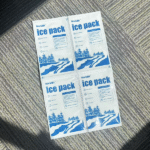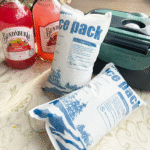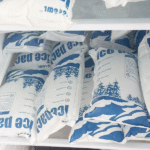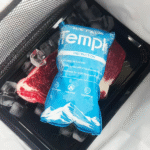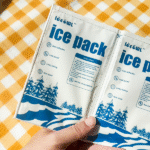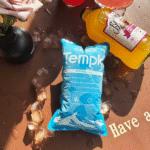Cold Supply Chain Definition: How It Works and Why It Matters in 2025
You’re surrounded by perishable products—from the milk in your fridge to life saving vaccines. Without an unbroken rantai pasokan dingin these products would spoil long before they reach you. Secara sederhana, a cold supply chain is a temperature controlled network that keeps goods within strict ranges from production to consumption. This article explains the cold supply chain definition, breaks down its components, examines challenges and solutions, and looks at emerging trends in 2025. By understanding the basics you can reduce waste, comply with regulations and maintain quality.
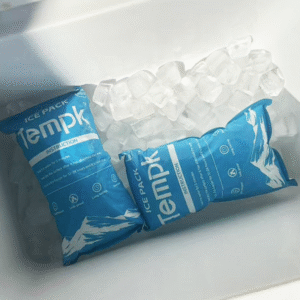
Key components of a cold supply chain: What equipment and processes keep products within their required temperature ranges.
Quality and compliance: How regulated temperature control protects product safety and meets strict standards.
Operational challenges and solutions: Strategies for tackling temperature excursions, transportation risks and high costs.
2025 inovasi dan tren: New technologies like IoT sensors, AI and blockchain that are transforming cold supply chains.
What Are the Key Components of a Cold Supply Chain?
Effective cold supply chain management starts with understanding the basic building blocks. It’s more than just refrigeration; it’s an integrated system that protects temperature sensitive goods from farm or factory all the way to your home. Below we explore each component.
Jawaban Langsung: A cold supply chain involves four core stages—cooling systems, penyimpanan dingin, temperature controlled transport and continuous monitoring. Each stage must maintain the product’s required temperature to preserve quality, safety and efficacy.
Cooling Systems and Cold Storage Facilities
The first link in a cold supply chain is the cooling system, which removes heat quickly after production. Blast freezers, liquid nitrogen baths and refrigerated containers are common methods. Rapid cooling prevents large ice crystals from forming in seafood or fruit, protecting texture and nutritional value. Once cooled, products move into fasilitas penyimpanan dingin—warehouses or cold rooms that maintain precise temperatures until shipping. These facilities use insulation, energy efficient compressors and backup power systems to guarantee consistent conditions.
| Kategori Produk | Kisaran Suhu Khas | Mengapa itu penting |
| Vaksin & Biologi | 2–8 ° C. | Preserves potency and prevents microbial growth. |
| Produk segar | 0–5°C | Slows ripening and reduces spoilage. |
| Makanan beku | –18 °C or below | Maintains texture and nutritional quality. |
Transport and Packaging Solutions
Once products leave storage they need temperature controlled transport. Truk berpendingin, gerbong, cargo ships and aircraft are designed to insulate and regulate internal temperatures. Pengiriman dalam mil terakhir, insulated vans and cargo bikes equipped with ice packs or phase change materials protect goods from ambient heat. Kemasan plays a complementary role: wadah terisolasi, dry ice and advanced materials like vacuum insulated panels maintain the microclimate around the product.
Best practices include combining active cooling (powered refrigeration) with passive insulation to handle delays. Misalnya, a grocery delivery service might use gel packs inside insulated bags to maintain 4 °C during transit. On longer routes, real time temperature sensors send alerts if conditions deviate, enabling drivers to take corrective action.
Continuous Monitoring and Data Logging
Monitoring is the nervous system of the cold supply chain. Sensors embedded in packaging, vehicles and storage units continuously record temperature, kelembaban dan lokasi. IoT devices transmit real time data to cloud dashboards, allowing operators to detect anomalies and respond quickly. For life saving products like biologics, continuous monitoring isn’t optional—it’s mandated by regulations such as Good Distribution Practices (PDB) and the FDA’s Food Safety Modernization Act Rule 204.
Practical Tips for Maintaining Cold Chain Integrity
Menilai persyaratan produk: Identify the precise temperature range for each product and choose appropriate cooling and packaging materials. Misalnya, mRNA vaccines require –70 °C storage, while fresh berries do well at 2–5 °C.
Invest in backup systems: Equip warehouses and trucks with redundant cooling units and backup generators to prevent temperature excursions during power outages.
Use data analytics: Monitor sensor data to predict equipment failures and optimize routes. Predictive maintenance can reduce unplanned downtime and save costs.
Latih tim Anda: Regularly train staff on handling, loading and unloading procedures. Human error is a common cause of temperature deviations.
Contoh kasus: A pharmaceutical company shipping insulin from California to Illinois implemented IoT sensors and a cloud dashboard. During transit one truck experienced a minor refrigeration failure, but the system alerted the dispatcher immediately. The driver diverted to the nearest service station, replaced a faulty compressor and resumed the journey. All units arrived within the safe temperature range, avoiding a recall and protecting patient safety.
How Does Cold Supply Chain Management Protect Product Quality and Compliance?
Quality and compliance sit at the heart of cold supply chain operations. Temperature excursions can render vaccines ineffective and fresh food unsafe. Regulations around the world require strict oversight and documentation to ensure consumers receive safe products. Let’s explore why effective management is essential.
Jawaban Langsung: Cold supply chain management maintains product quality by keeping goods within strict temperature ranges, complying with regulations and minimizing waste. Without continuous control and documentation, vaccines lose potency and food spoils.
Regulatory Compliance and Quality Assurance
Multiple agencies oversee temperature sensitive goods. Itu Organisasi Kesehatan Dunia (SIAPA) Dan Administrasi Makanan dan Obat -obatan (FDA) define acceptable temperature ranges for pharmaceuticals and food, sedangkan Undang-Undang Modernisasi Keamanan Pangan (FSMA) Aturan 204 mandates traceability records within 24 hours for certain foods. Di industri farmasi, itu Undang-Undang Keamanan Rantai Pasokan Narkoba (DSCSA) requires electronic transaction data and continuous monitoring.
Ensuring compliance means more than meeting temperature thresholds. Companies must document every handoff, maintain calibration records for sensors and provide audit trails. A single missing record can lead to fines, recalls or loss of licensure.
Reducing Waste and Enhancing Sustainability
Poor cold chain management contributes to significant waste. The WHO estimates that nearly half of vaccines are wasted annually due to temperature excursions. Spoilage of fresh produce and dairy products also leads to food insecurity and economic losses. By investing in modern refrigeration and monitoring, Perusahaan dapat mengurangi limbah, cut costs and lower their carbon footprint. Energy efficient compressors, solar powered storage units and reusable packaging help align operations with sustainability goals.
Economic and Health Impacts
The cold chain supports high value products across pharmaceuticals, makanan, cosmetics and chemicals. Disruptions result in costly recalls, damaged reputations and lost revenue. In the life sciences sector, temperature deviations can harm patients. Misalnya, biologics lose efficacy when exposed outside 2–8 °C. Maintaining temperature integrity ensures that patients receive safe therapies and that farmers and manufacturers retain profits.
| Impact Area | Example Cost/Consequence | Benefit of Proper Management |
| Vaccine waste | Up to 50 % of vaccines discarded due to temperature excursions | Ensures potent vaccines reach patients; reduces public health risks |
| Food spoilage | Millions of tonnes of produce lost annually | Memperpanjang umur simpan, reduces hunger and increases profitability |
| Denda peraturan | Missing DSCSA records can trigger sanctions | Maintains compliance and avoids recalls |
Practical Tips for Quality and Compliance
Dokumentasikan setiap langkah: Maintain digital records of temperature data, sensor calibrations and chain of custody handoffs to demonstrate compliance.
Validasi peralatan: Regularly calibrate refrigeration units and sensors to ensure accuracy. Use validated packaging for sensitive products.
Conduct audits: Periodically audit internal processes and third party carriers to identify gaps and train staff on regulatory changes.
Integrate sustainability: Adopt energy efficient refrigeration and explore renewable power sources such as solar powered storage units to reduce environmental impact.
Contoh kasus: A dairy exporter shipping fresh milk to Asia faced frequent spoilage during transit. By switching to insulated containers with phase change materials and implementing GPS enabled temperature trackers, the company achieved a 20 % reduction in waste. The investment paid for itself within three months through decreased product loss and fewer customer complaints.
What Challenges and Solutions Exist in Cold Supply Chain Operations?
Even with best practices, maintaining an unbroken cold chain is challenging. Temperature controlled logistics involve complex handoffs, variable transit conditions and high operating costs. Understanding common pain points helps you develop resilient solutions.
Jawaban Langsung: The biggest challenges in cold supply chains are maintaining temperature control, managing logistical risks, controlling costs and meeting regulations. Solutions include strategic planning, robust monitoring and embracing digital technologies.
Temperature Control and Monitoring
Temperature excursions can occur at any point—during loading, transportation or storage. Door openings, equipment malfunctions and power outages are common causes. Untuk memitigasi risiko, companies deploy redundant refrigeration systems, plan rapid loading procedures and use real time sensors. Analisis prediktif can spot patterns that indicate impending failures. Misalnya, a gradual rise in compressor amperage may signal an upcoming breakdown, prompting maintenance before a failure.
Transportation Risks and Contingency Planning
Transportation involves many variables: traffic delays, cuaca, customs clearance and driver behavior. Cold chain shipments often cross borders, so regional regulations and infrastructure quality matter. Effective contingency planning includes mapping alternative routes, pre qualifying service stations and establishing communication protocols for emergencies. In the life sciences industry, validated shipping lanes and rapid response protocols are now standard.
Cost Management and Sustainability
Cooling and transportation are energy intensive. Refrigerated facilities and vehicles consume large amounts of electricity or fuel, contributing to high costs and carbon emissions. Balancing cost efficiency with reliability is a constant challenge. Perusahaan mengadopsi unit bertenaga surya and energy efficient compressors to reduce operating expenses. Advanced route optimization software minimizes travel distance, while reusable packaging cuts waste and long term cost.
| Tantangan | Menyebabkan | Larutan |
| Kunjungan suhu | Door openings, kegagalan peralatan | Use redundant refrigeration, quick loading procedures and predictive maintenance. |
| Transportation delays | Traffic, cuaca, customs issues | Map alternative routes, pre qualify service stations, maintain communication protocols. |
| High energy costs | Constant refrigeration and specialized vehicles | Invest in energy efficient compressors, explore solar powered storage and reusable packaging. |
| Compliance complexity | Different regional regulations, recordkeeping requirements | Implement digital documentation systems and train staff regularly. |
Practical Tips for Overcoming Challenges
Plan your network: Locate warehouses near suppliers and customers to shorten transit times. Use network optimization tools to determine optimal facility locations and reduce distance.
Simulate operations: Use digital twins or simulation software to model temperature behaviour under different scenarios. Simulating door openings or equipment failures helps you design contingency plans.
Berkolaborasi dengan mitra: Engage carriers, equipment suppliers and technology providers early. Choose partners with validated equipment, IoT monitoring and a strong track record.
Merangkul keberlanjutan: Explore renewable energy solutions, such as solar powered cold rooms and fuel efficient vehicles. Reusable and recyclable packaging not only reduces waste but also appeals to environmentally conscious consumers.
Contoh kasus: A fruit exporter in Peru faced significant losses due to delays at ports. By establishing a pre cooled consolidation center near the farms and partnering with a carrier offering temperature controlled containers, the exporter reduced transit time by 30 %. The company also equipped containers with humidity sensors, ensuring grapes arrived crisp and ready for sale.
How Is the Cold Supply Chain Evolving in 2025?
Kemajuan teknologi, shifting consumer preferences and regulatory pressures are reshaping cold supply chains. The market is growing quickly and innovators are integrating automation, artificial intelligence and sustainable practices to meet future demands.
Jawaban Langsung: Di dalam 2025, cold supply chains are embracing automation, Ai, IoT sensors and blockchain for end to end visibility; diverse temperature capabilities; sustainable practices; upgraded facilities and expanded distribution networks. Market growth is driven by pharmaceuticals, fresh foods and plant based products.
Technology Trends: Ai, IoT dan Blockchain
Sensor cerdas yang mendukung IoT: Sensor yang terhubung memonitor suhu, kelembaban dan lokasi secara real time. Ketika penyimpangan terjadi, automatic alerts allow immediate corrective action. These devices reduce risk and improve efficiency.
Artificial intelligence for route optimization: AI algorithms analyze traffic patterns and weather to plan efficient routes. This reduces transit time and energy consumption, ensuring goods arrive promptly and in optimal condition.
Blockchain untuk ketertelusuran: Blockchain provides a tamper proof ledger of product movements, ensuring transparency and trust. It helps stakeholders verify authenticity and compliance and reduces the risk of counterfeit products.
Freezer kriogenik portabel: For ultra cold products like cell therapies, portable freezers maintain temperatures as low as –80 °C to –150 °C, enabling safe transport to remote locations.
Market and Consumer Trends
Pertumbuhan pasar: The global cold chain logistics market was valued at around USD 293.58 miliar masuk 2023 dan diproyeksikan tumbuh menjadi USD 862.33 miliar oleh 2032, reflecting a compound annual growth rate of roughly 13 %. Rising demand for biologics and fresh foods continues to drive expansion.
Produk baru: Consumer interest in plant based foods, gluten free products and organic certifications is boosting demand for diverse temperature capabilities. Small and medium enterprises entering this market require logistic expertise and scalable cold chain networks.
Upgraded infrastructure: Many cold storage facilities were built 40–50 years ago and are now being modernized. Facilities are investing in automation, energy efficiency and digital visibility to comply with tightening regulations and phase out environmentally harmful refrigerants.
Better distribution strategies: Cold chain facilities are moving closer to production areas or key ports to improve distribution efficiency. This reduces travel distance, shortens delivery times and meets the needs of modern retail.
| Innovation or Trend | Keterangan | Manfaat praktis |
| Sensor IoT | Real time tracking of temperature, kelembaban dan lokasi | Reduces risk of excursions and improves response time |
| Optimalisasi rute AI | Algorithms plan efficient routes using traffic and weather data | Shortens transit time and lowers emissions |
| Ketertelusuran Blockchain | Tamper proof ledger for end to end visibility | Builds trust and prevents counterfeit goods |
| Penyimpanan bertenaga surya | Renewable energy for cold rooms and warehouses | Cuts energy costs and carbon footprint |
| Freezer kriogenik portabel | Maintain ultra cold temperatures for cell therapies | Enables safe transport to remote locations |
Practical Tips for Future Proofing Your Cold Supply Chain
Adopt flexible infrastructure: Design storage and transport systems capable of handling multiple temperature zones. Mixed use warehouses allow one facility to handle frozen, chilled and ambient goods simultaneously.
Integrate data platforms: Centralize information from sensors, blockchain records and logistics partners. Unified dashboards enable real time decision making.
Jelajahi energi terbarukan: Implement solar powered refrigeration units and energy efficient cooling technologies to reduce operating costs and emissions.
Invest in workforce training: Equip staff to use digital tools and interpret data. Seiring dengan berkembangnya teknologi, human skills must keep pace.
Contoh kasus: A Southeast Asian logistics provider modernized its fleet with IoT sensors and AI enabled route planning. By deploying blockchain for shipment records and installing solar panels on warehouse roofs, the company reduced energy consumption by 25 % and improved delivery accuracy. The approach attracted new clients seeking sustainable and transparent logistics, demonstrating how technology can create competitive advantage.
2025 Latest Cold Supply Chain Developments and Trends
Staying current with industry developments is essential for staying competitive. Here’s a snapshot of the latest progress shaping cold chains in 2025.
Ikhtisar Tren: The cold supply chain is shifting toward smarter technology, sustainability and greater visibility. Pasar berkembang pesat, and innovations from Asia to Europe are shaping global practices.
Kemajuan terbaru sekilas
AI powered route planning: Logistics providers are widely adopting AI tools to optimize routes based on real time traffic and weather data.
Adopsi Blockchain: Companies are piloting blockchain solutions to track vaccines and biologics, ensuring tamper proof records and reducing counterfeit risks.
Penyimpanan dingin bertenaga surya: Rural areas in Asia and Africa are embracing solar powered cold rooms to overcome unreliable electricity grids and cut costs.
Cryogenic transport for advanced therapies: Portable freezers capable of –150 °C are enabling safe transport of cell and gene therapies.
Green refrigerants: Regulations are pushing facilities to phase out HFCs and adopt eco friendly refrigerants like ammonia and CO₂, mengurangi dampak lingkungan.
Wawasan pasar: Consumer demand for fresh foods, biologics and plant based products is booming. According to market projections, cold chain logistics revenues could exceed USD 862 miliar oleh 2032, up from roughly USD 324.85 miliar masuk 2024. This growth demands more sophisticated infrastructure, better distribution strategies and sustainable energy solutions.
Pertanyaan yang sering diajukan
Pertanyaan 1: What is the difference between a cold supply chain and a traditional supply chain?
A traditional supply chain covers the entire process of procuring, manufaktur, storing and distributing goods. A cold supply chain is a subset focusing on temperature sensitive products; it requires specialized storage, mengangkut, packaging and monitoring to maintain strict temperature ranges.
Pertanyaan 2: Why is continuous monitoring important?
Continuous monitoring provides real time visibility into temperature, kelembaban dan lokasi. It allows immediate intervention if conditions deviate, preventing product loss and ensuring compliance.
Pertanyaan 3: What regulations govern cold chain logistics?
Key regulations include the WHO’s vaccine temperature guidelines, the FDA’s FSMA Rule 204 (which mandates traceability for certain foods) and the DSCSA for pharmaceuticals. National GDP guidelines also apply.
Pertanyaan 4: How can small businesses implement a cold supply chain?
Small businesses should start by identifying the required temperature range for their products, investing in insulated packaging, partnering with validated carriers and using affordable IoT sensors for monitoring. Collaborating with third party logistics providers can reduce up front costs.
Ringkasan dan Rekomendasi
In today’s perishable goods market, a cold supply chain isn’t optional—it’s essential. An unbroken temperature controlled network preserves product quality, protects consumers and meets strict regulations. Key components include cooling systems, penyimpanan dingin, temperature controlled transport and real time monitoring. Challenges such as temperature excursions, logistical risks, high energy costs and compliance requirements can be managed through strategic planning, technology adoption and staff training. Menantikan 2025, innovations like AI, IoT, blockchain and renewable energy are transforming cold supply chains into smart, sustainable networks.
Langkah selanjutnya yang dapat ditindaklanjuti:
Nilai rantai pasokan Anda: Evaluate your products’ temperature needs and map out each stage from production to delivery. Identify weak points where temperature excursions might occur.
Berinvestasilah dalam teknologi: Mengadopsi sensor IoT, data loggers and AI powered route planning to improve visibility and efficiency. Consider blockchain pilots for sensitive products.
Modernisasi infrastruktur: Upgrade warehouses with energy efficient cooling systems and explore renewable energy sources. Choose multi temperature facilities to handle a variety of products.
Latih tim Anda: Develop standard operating procedures for handling temperature sensitive goods and provide regular training to ensure compliance.
Bermitra secara strategis: Work with logistics providers who have validated equipment and sustainable practices. Collaboration across the supply chain builds resilience and trust.
Tentang tempk
Tempk is a leader in cold chain packaging and logistics solutions. Our research and development team designs gel packs, kotak terisolasi, pallet covers and smart shippers tailored for food and pharmaceutical shipments. We prioritize sustainability by developing reusable and recyclable materials and investing in eco friendly refrigerants. With a global presence and decades of experience, we help customers maintain product integrity, meet regulatory standards and reduce waste. Ready to enhance your cold supply chain? Consult our experts for personalized advice and innovative solutions that protect your products and support your sustainability goals.
















